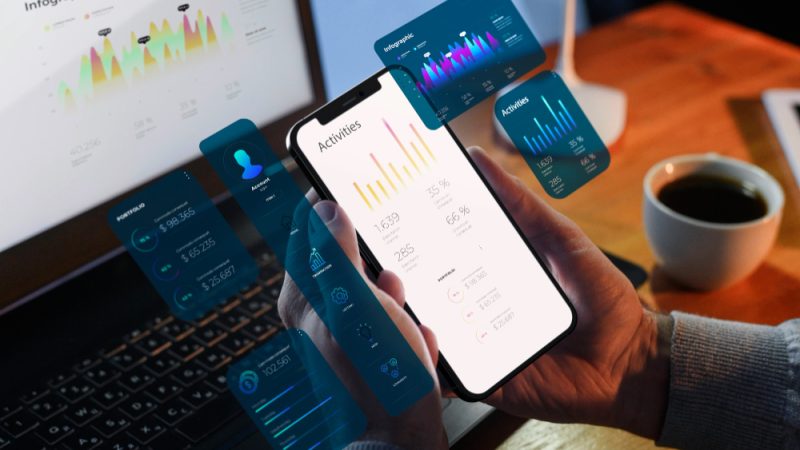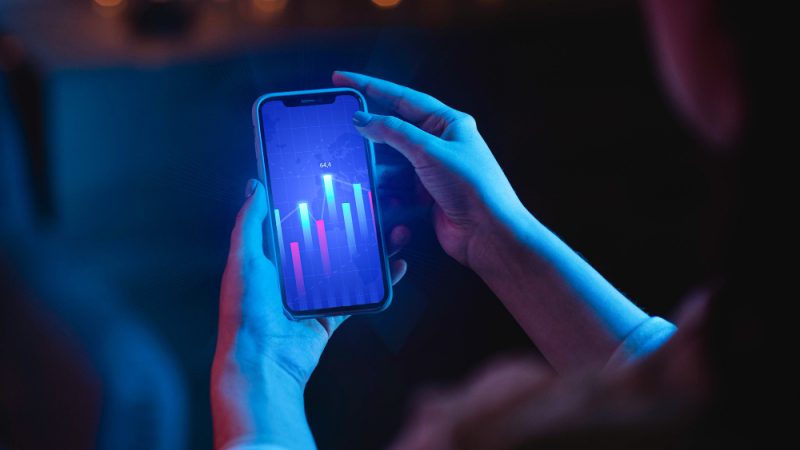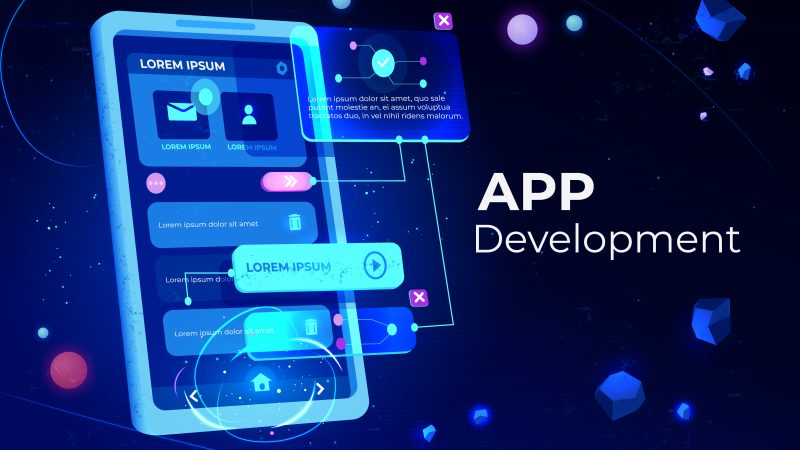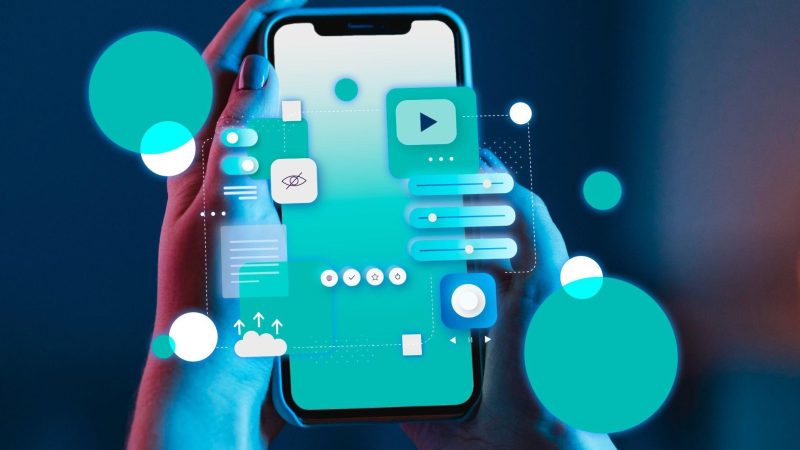Facial Recognition in Apps: Facts to Know Before Starting a Project
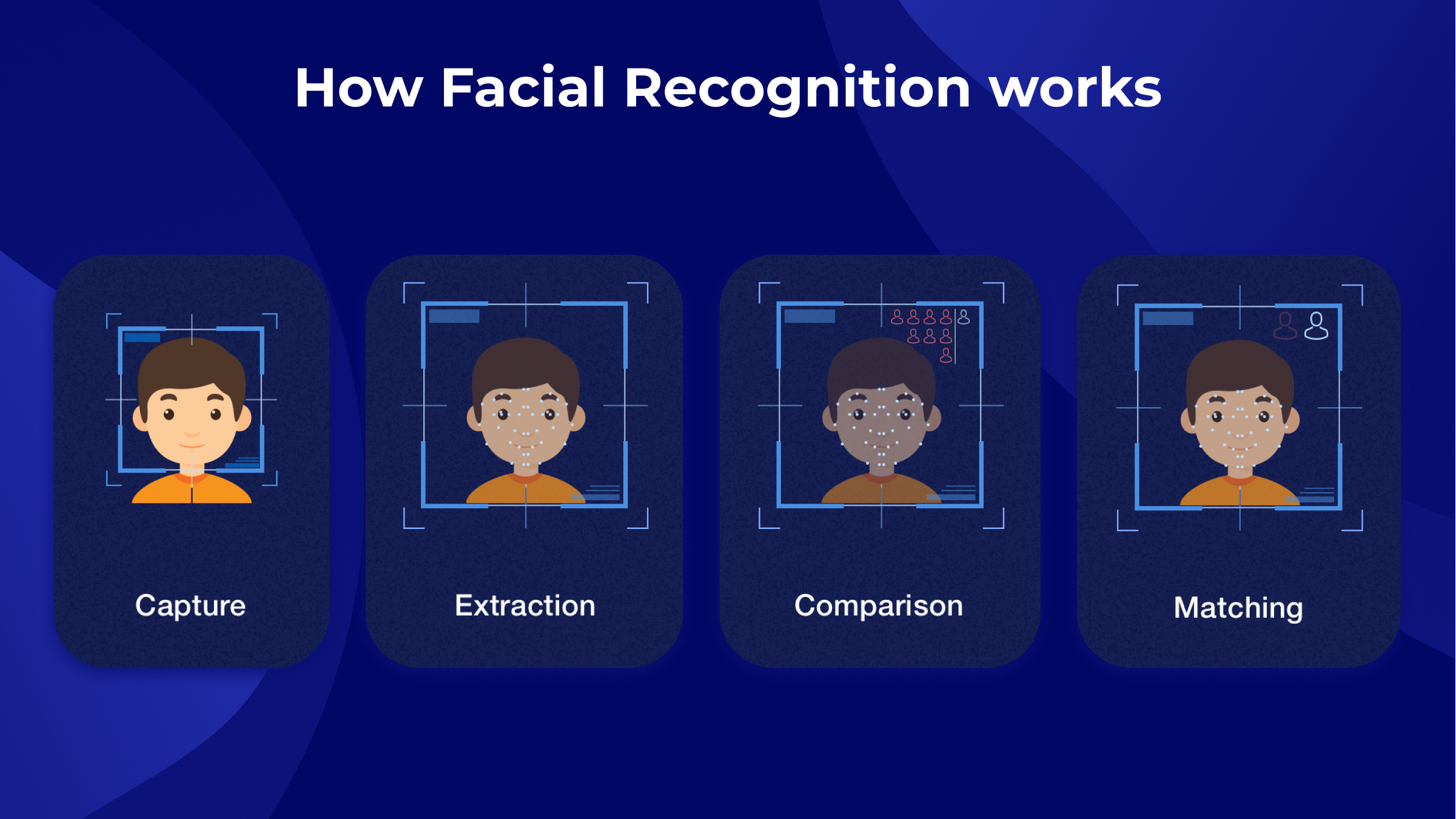
Every person has unrepeatable peculiarities in appearance. Nowadays, modern technologies allow using our unique features to increase security and protect personal data in applications.
Fingerprints identification is a technology widely applied in many mobile devices, whereas facial recognition is currently gaining popularity. Its market value is forecasted to reach $8.5 billion by 2025, which defines that this solution is indeed promising.
This article will describe the most successful facial identification features to apply to your application and take advantage of.
How Does Facial Recognition Work?
Face recognition technology may be implemented into apps for both iOS and Android platforms, but with diverse instruments, which we’ll also cover in this post. Prior to this, let’s characterize the facial recognition concept and its operating principle.
So what is facial recognition? It’s a technology aimed at peoples’ faces identification. The system verifies face features with over 80 biometrics using a camera. Next, it compares this data with the faces saved to its database and searches for matching ones for authentication. The measurements required for this comprise the distance between eyes, mouth placement, jawline shape, size and shape of the nose, and lots of other indicators. The system memorizes the entire data of such faceprints.
Let’s consider this process more in detail. The whole face recognition consists of four stages. Firstly, the system defines the face and completes the measurements, which are then extracted and compared to the faceprints saved in the database. And finally, the system authenticates the face by matching it with the stored ones.
Many apps have already implemented facial recognition technology to expand their opportunities, so we can observe some successful illustrations.
The Best Facial Recognition Apps
If you want to start the software development process of the facial recognition app, you should overview excellent examples of how this technology was implemented into other products. Here are some of them:
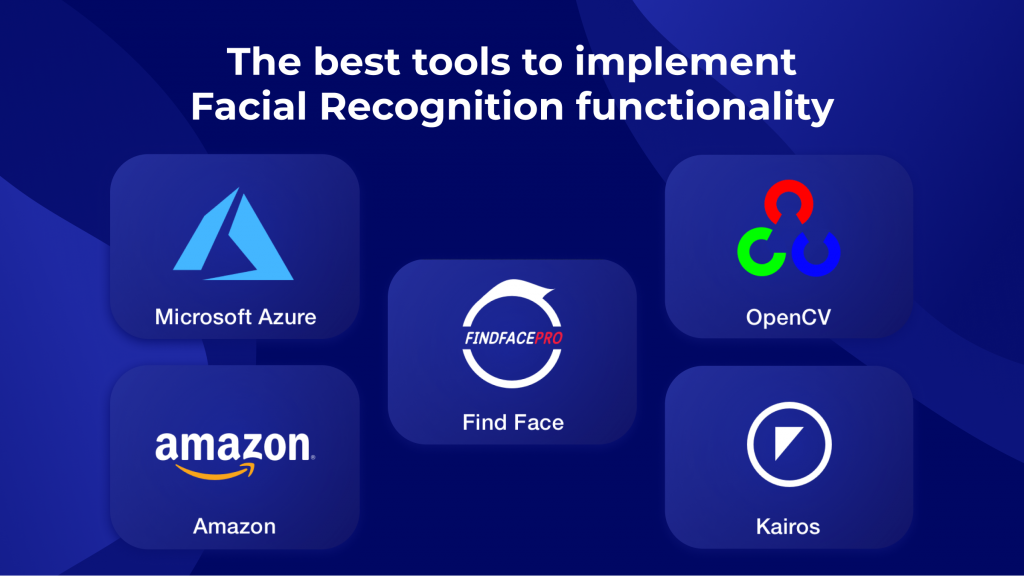
- FaceLock is one of the first apps developed to raise the safety level of personal data. The app allows its users to restrict access to confidential information with the help of face recognition. Thus, this data is available only for a limited circle of persons. The interface is intuitive and adjustable, which makes the app attractive for users. What’s more, it offers two versions, one of which is free, and the second one requires extra fees and has enhanced features.
- FindFace is a software that helps to find social networks of people from photos with Artificial Intelligence. Besides, it is 95% accurate and completes recognition among 250 mln faces instantly. The app provides a cross-platform API that may be applied for mobile and web apps.
- LuxandFaceRecognition is an app for iOS, which is able to authenticate people. You can select a face and name it for further recognition. Despite the app capabilities being not that wide, the creators provide an SDK to developers for building more complex products.
- Face2Gene is an app that can define different genetic disorders. The working principle is as follows: an uploaded image is scanned and compared to numerous photos of various syndromes to find matches.
- Facial Metrics Analysis Pro is an amusing Android solution that scans your face and finds a celebrity who looks similar to you.
As you can see, face recognition technology is implemented in so many interesting products built for so many different purposes, so you can also create your own unique project.
Benefits And Drawbacks of Facial Recognition Technology
Before starting the project, let’s overview the existing advantages and disadvantages so you can find out what projects are suitable for the integration of this technology.
Benefits:
- Non-contact. Face recognition is advantageous for major companies or public establishments. In contrast with fingerprint indicators, this technology is more secure, fast, and hygienic.
- Speed. Face recognition has evolved and is now a swift and convenient solution. Notably, if it’s coupled with AI, the recognition of memorized faces is accomplished within a couple of seconds.
- Protection. The technology is also highly relevant for public places since it can constrain strangers from getting to the bounded areas, rooms, or buildings and lets in only the staff. This system may increase the protection in huge warehouses with numerous employees.
- Automation. Such systems replace manual identification and can operate all the time accurately and efficiently. The human factor may sometimes affect the accuracy of recognition, which causes security issues. It scans and estimates various indicators of the entire facial structure, which humans can’t do. Facial recognition solves this issue as it operates 24/7 and can’t get tired or fall asleep in the workplace.
- High Precision. Nowadays, the quality of brand-new cameras is more than sufficient for excellent authentication accuracy. Moreover, it only keeps getting better, providing perfect, instant, and convenient face identification.
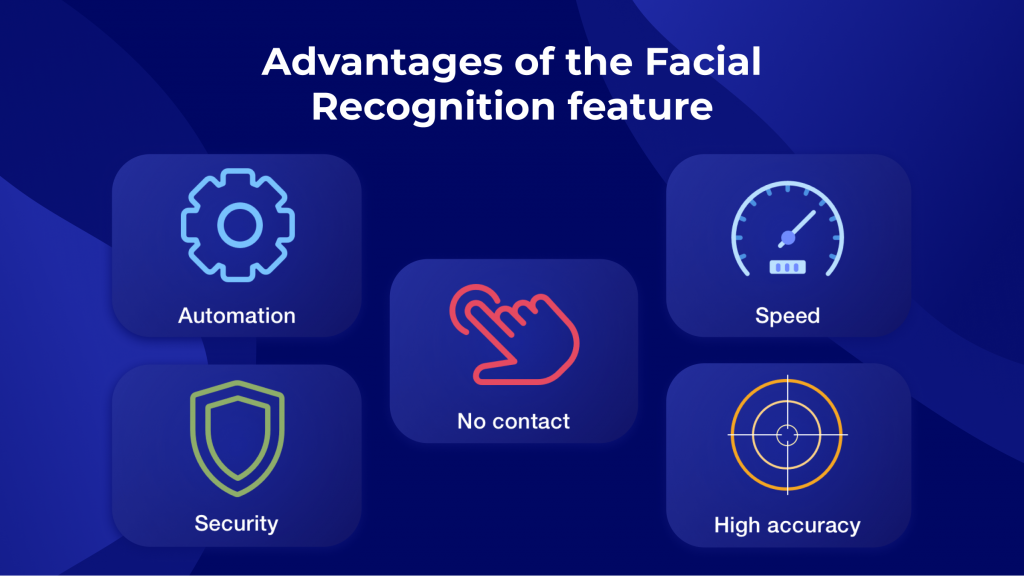
Yet, facial recognition has certain disadvantages which are worth mentioning.
Drawbacks:
- Analyzing challenges. Constant video recording requires immense storage for processing. The shooting needs to have high quality for successful recognition. Therefore, purchasing and installing up-to-date appliances is a complex and costly process.
- Changing face features. Face recognition won’t be able to process the face with beards and mustaches. To be recognized, a person should either constantly wear facial hair or shave without growing it back. What’s more, heavy makeup or a hat can also make it impossible to detect the individual. Otherwise, the system won’t be able to complete authentication correctly.
- Angle challenges. Precision will reach 99.30% if a person looks straight into the camera, and there’s good light as well. On the contrary, the face won’t be detected and recognized if it isn’t positioned right in front of a camera, and the room is too dark.
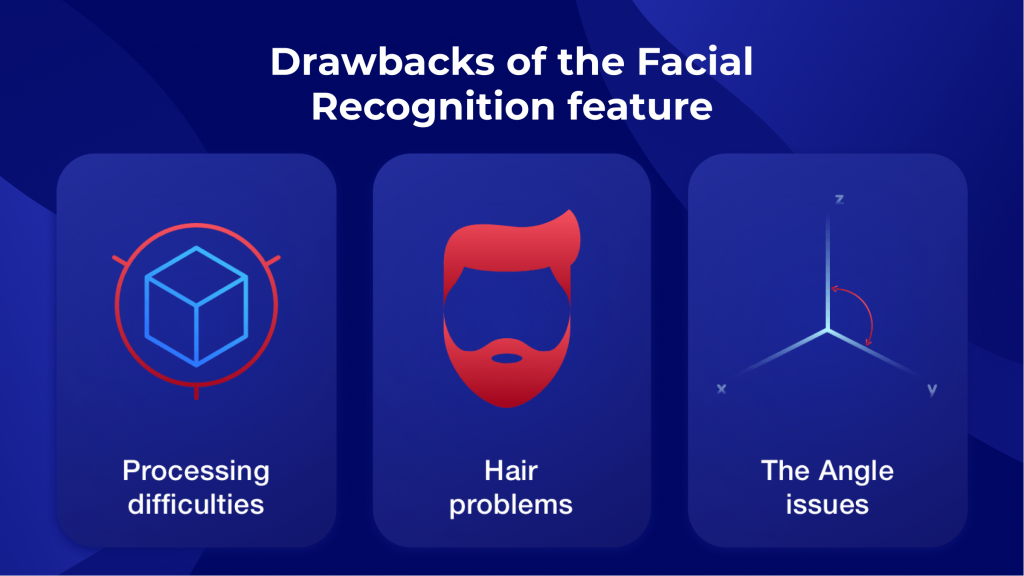
Instruments to Implement Facial Recognition Feature
Let’s now discuss the most successful tools to build a perfect app with accurate and efficient face recognizing technology.
Microsoft Azure provides an API that may be integrated into your product. This instrument comprises an expanded functionality: face capturing, authentication, and even emotion, age, and gender determining. In addition, multi-face tracking is also available. Unfortunately, the SDK (Software development kit) for developers is not provided.
Open CV is an open-source library that is able to detect multiple faces on photos and videos. This solution offers an SDK which is a huge advantage. Yet, there’s no API offered.
Amazon has an API that is useful to create a platform for face authentication on photos, determining the age and gender of a person. The disadvantage is that it doesn’t provide an SDK for builders.
Find Face is a cloud API that is able to detect faces, recognize them (compare faces on several images), identify a face, define age, gender, and emotions.
Kairos is a beneficial solution that provides both SDK and an API. Its capabilities comprise face recognition on photos as well as videos, the age, gender, ethnicity, and emotions determining.

Summarize
Face recognition is a progressing technology, the opportunities, and capabilities of which continue to expand. There are many successful apps built for various aims with this feature implemented. Consequently, face recognition may be adapted to your product providing your target audience with an excellent solution. To create an efficient application with this technology, you should apply to a trustworthy software development company with experience in accomplishing similar projects. Thus, you’ll receive a great product with ensured quality meeting all your requirements.
Author’s bio
 Kate Orekhova is a technology writer at Cleveroad. A writer by day and a reader at night, she keeps tabs on technology and innovations. She is passionate to tell people about the latest tech trends in the world of IT.
Kate Orekhova is a technology writer at Cleveroad. A writer by day and a reader at night, she keeps tabs on technology and innovations. She is passionate to tell people about the latest tech trends in the world of IT.

